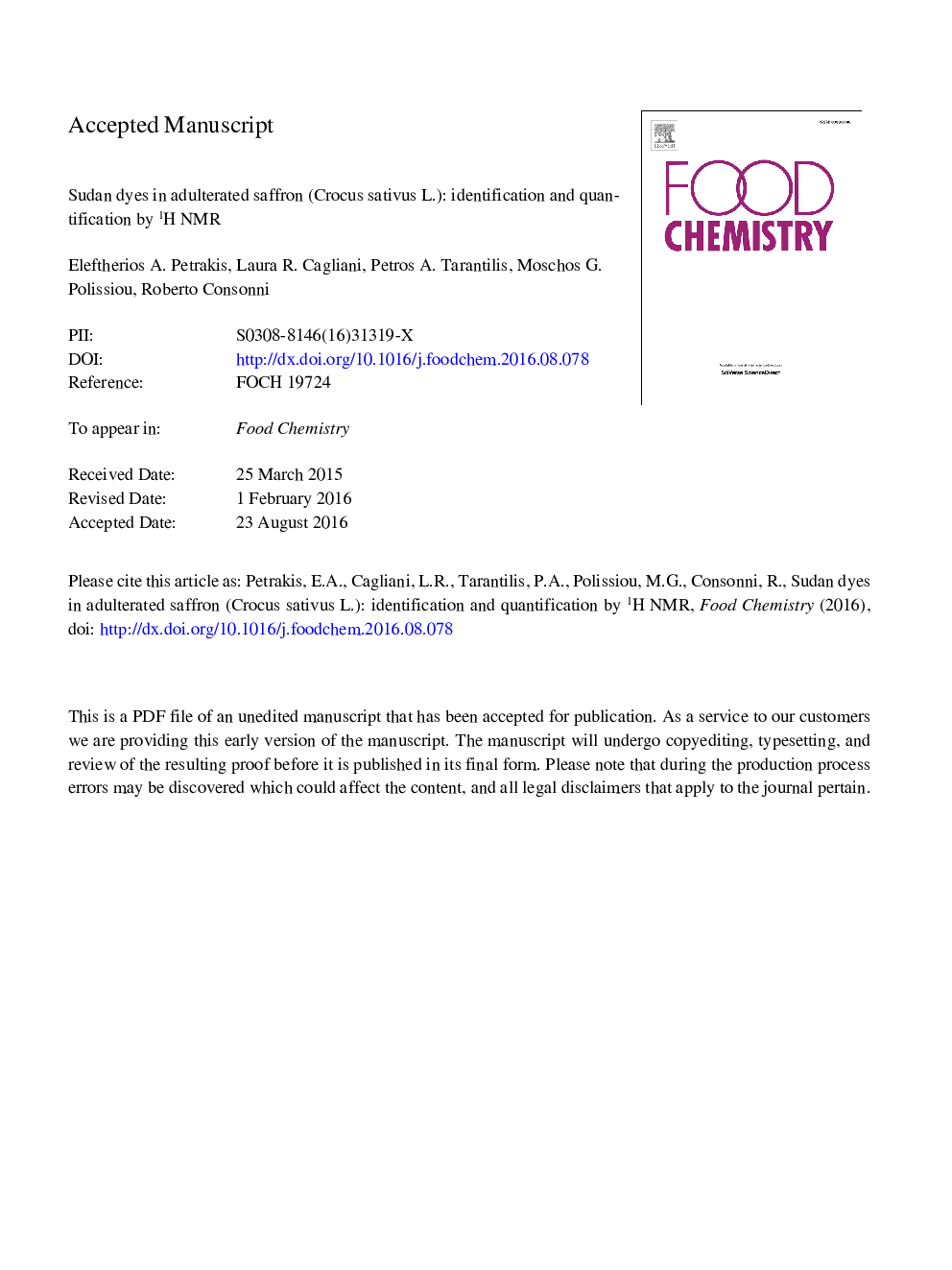| Article ID | Journal | Published Year | Pages | File Type |
|---|---|---|---|---|
| 7586900 | Food Chemistry | 2017 | 24 Pages |
Abstract
Saffron, the dried red stigmas of Crocus sativus L., is considered as one of the most expensive spices worldwide, and as such, it is prone to adulteration. This study introduces an NMR-based approach to identify and determine the adulteration of saffron with Sudan I-IV dyes. A complete 1H and 13C resonance assignment for Sudan I-IV, achieved by two-dimensional homonuclear and heteronuclear NMR experiments, is reported for the first time. Specific different proton signals for the identification of each Sudan dye in adulterated saffron can be utilised for quantitative 1H NMR (qHNMR), a well-established method for quantitative analysis. The quantification of Sudan III, as a paradigm, was performed in varying levels (0.14-7.1Â g/kg) by considering the NMR signal occurring at 8.064Â ppm. The high linearity, accuracy and rapidity of investigation enable high resolution 1H NMR spectroscopy to be used for evaluation of saffron adulteration with Sudan dyes.
Related Topics
Physical Sciences and Engineering
Chemistry
Analytical Chemistry
Authors
Eleftherios A. Petrakis, Laura R. Cagliani, Petros A. Tarantilis, Moschos G. Polissiou, Roberto Consonni,
